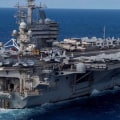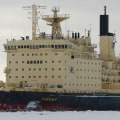Nine nuclear submarines have sunk, either due to accidents or intentional sinking. The Soviet Navy has lost five, the Russian Navy two, and the United States Navy (USN) two. The Kursk incident in 2000 sparked accusations of a cover-up by Russian officials, and the media criticized the lack of transparency. The Indonesian Navy (TNI) is currently searching for its KRI Nanggala-402 submarine after losing contact with it in waters off Bali.
The plan to build nuclear-powered submarines in South Australia has alarmed anti-war and environmental activists, who point to the long history of accidents involving these vessels. Vyacheslav Popov, former commander of Russia's Northern Fleet, believes the Kursk sank due to a collision with a NATO submarine. Dr. Green raised questions about what would happen to spent fuel and the lack of answers.
In 1968, the US Navy's Scorpion nuclear attack submarine disappeared in the Atlantic Ocean with 99 men on board. Nuclear submarines are considered a covert delivery system and are difficult to detect. In 2021, North Korea lost a submarine in the Sea of Japan. In 2003, the US submarine USS Hartford ran aground in La Maddalena, Sardinia.
The Kursk tragedy was one of the deadliest underwater accidents in world history, second only to the loss of the USS Thresher in 1963, which killed 129 people. This prompted the US Navy to create the SUBSAFE program to ensure that all critical components of a nuclear submarine are tested and retested. The nuclear energy lobby has been quick to capitalize on the Prime Minister's announcement to drive greater participation in the nuclear fuel cycle, including atomic energy and waste storage. After a multinational effort, a Royal Navy team was able to free a submarine from entanglement and return it to the surface.
Today most nuclear ships and submarines require radiation detection monitoring through the use of active and passive dosimeters.



